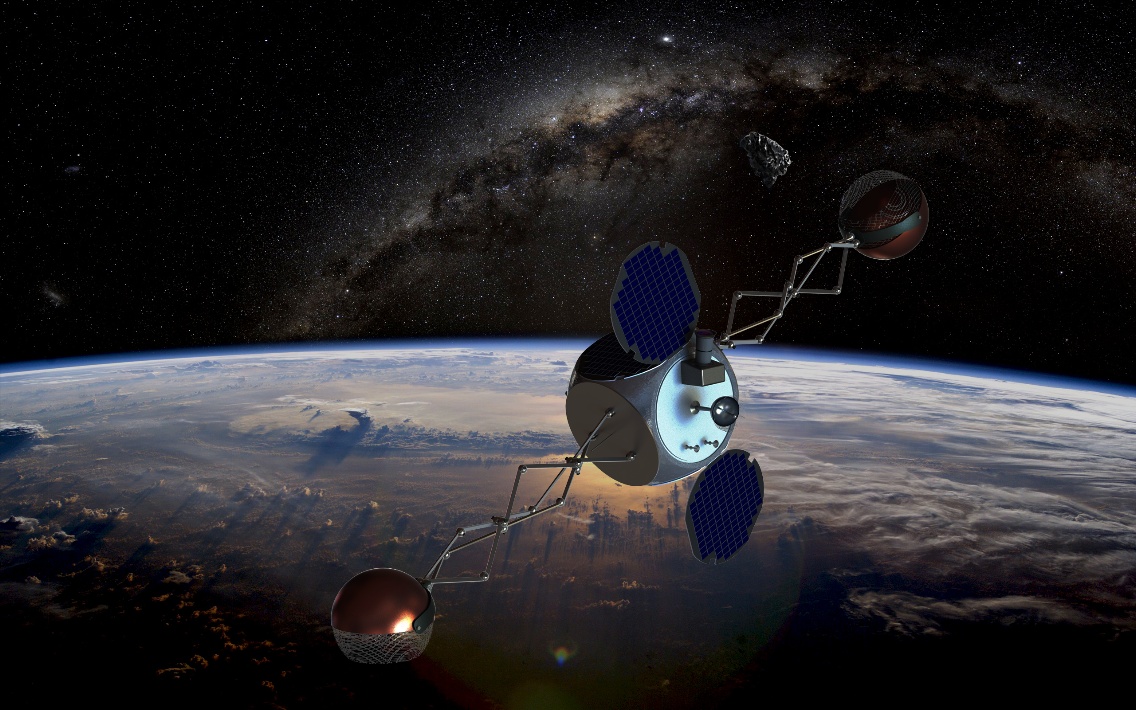
'Sling-Sat' Could Remove Space Junk on the Cheap

A proposed space-junk removal system would hop from one piece of debris to the next without burning much fuel, potentially making a de-clutter mission economically feasible with current technologiy.
The TAMU Space Sweeper with Sling-Sat, or 4S for short, would harness the momentum imparted by capturing and ejecting one object to slingshot on to the next chunk of space junk, its developers say.
“The goal of this mission is to remove as many pieces of debris with the minimum amount of fuel,” said Daniele Mortari of Texas A&M University.
A growing problem
Earth is surrounded by a huge and ever-growing cloud of orbital debris — stuff like spent rocket bodies, dead spacecraft and the fragments generated when these objects collide. [The Expanding Danger of Space Junk (Video)]
NASA estimates that about 500,000 pieces bigger than a marble and 22,000 as large as a softball whiz around Earth at fantastic speeds. And there are probably hundreds of millions of flecks at least 1 millimeter in diameter.
This cloud of junk poses a threat to the satellites and spacecraft circling our planet, including the International Space Station, and many researchers say humanity must act soon to prevent the problem from really getting out of hand.
Get the Space.com Newsletter
Breaking space news, the latest updates on rocket launches, skywatching events and more!
“It is well understood that we are past the point of no return. Relying solely on improved tracking and avoidance is not enough … it is simply a technical form of sticking your head in the sand and crossing your fingers,” Texas A&M PhD student Jonathan Missel told SPACE.com. “We are at a point where the problem needs to be solved, with active removal, not just avoided.”
A new idea
Many ideas have been put forward over the years to combat the space-junk threat, including schemes that would blast debris with lasers or snare it in a giant net.
“While they are interesting to think about, they are often threatening to operating satellites, or need technological advances that are decades out,” Missel said of some of the more ambitious offerings.
The most technically and politically sound idea is a simple rendezvous mission, during which a clean-up craft would travel to and de-orbit debris objects one at a time, Missel said. But such a mission would burn loads of fuel to get between widely spaced targets, making it “fatally plagued by inefficiency,” he added.
The 4S system, which Missel and Mortari are developing, aims to correct this fatal flaw. It would snare debris at the end of a spinning satellite, then fling the object down to burn up in Earth's atmosphere.
The spacecraft would harness the momentum exchanged during both of these actions to cruise over to the next piece of space junk on its list, minimizing fuel use and extending its operational life to the point that such a mission might be practical.
Work on 4S this year includes looks at hardware options, Mortari said, and further optimization of the idea.
Leonard David has been reporting on the space industry for more than five decades. He is former director of research for the National Commission on Space and a past editor-in-chief of the National Space Society's Ad Astra and Space World magazines. He has written for SPACE.com since 1999. Follow SPACE.com on Twitter @Spacedotcom. We're also on Facebook & Google+.
Join our Space Forums to keep talking space on the latest missions, night sky and more! And if you have a news tip, correction or comment, let us know at: community@space.com.

Leonard David is an award-winning space journalist who has been reporting on space activities for more than 50 years. Currently writing as Space.com's Space Insider Columnist among his other projects, Leonard has authored numerous books on space exploration, Mars missions and more, with his latest being "Moon Rush: The New Space Race" published in 2019 by National Geographic. He also wrote "Mars: Our Future on the Red Planet" released in 2016 by National Geographic. Leonard has served as a correspondent for SpaceNews, Scientific American and Aerospace America for the AIAA. He has received many awards, including the first Ordway Award for Sustained Excellence in Spaceflight History in 2015 at the AAS Wernher von Braun Memorial Symposium. You can find out Leonard's latest project at his website and on Twitter.









